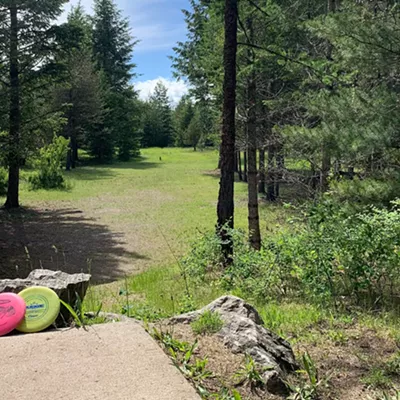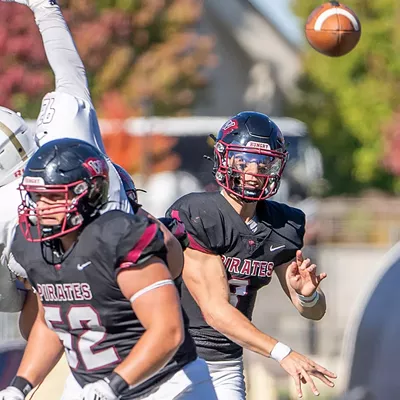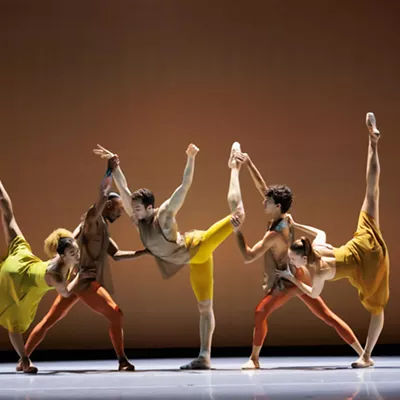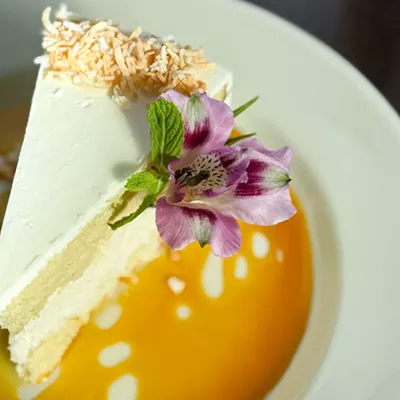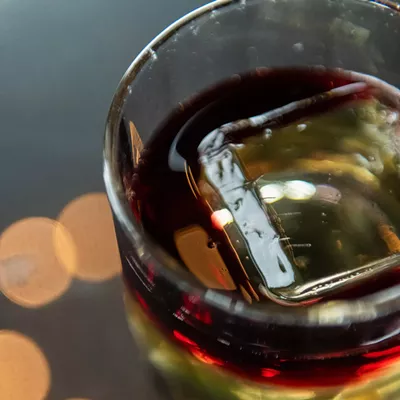
"Stand to your timber," a resonant voice booms over the loudspeaker. "3, 2, 1, GO!"
Axes swing overhead, then crash into logs between each athlete's feet. Whoever breaks the wood in half first wins. American Erin LaVoie and Canadian Stephanie Naud are chop-for-chop not only in this event, but the entire STIHL Timbersports International Women's Cup.
LaVoie, a Spokane native, set the world record for the underhand chop in the STIHL U.S. Women's Championship in July. With a time of 23.61 seconds, she shaved nearly five seconds off the previous record. If she can get close to that time again, she could edge out Naud for the world title.
Splinters and chips fly. Then two nearly simultaneous cracks. The results are in: Naud at 26.56 seconds, and LaVoie at 26.24.
The lifetime Spokanite is now, at least according to this August's STIHL World Championships in Klingenthal, Germany, the best lumberjill in the world.
LaVoie started competing in timbersports during college and has now dedicated over two decades to the sport. In addition to competing professionally, LaVoie owns and operates Predation Crossfit in East Spokane, where she trains nearly every day she's not chopping or hauling wood. She also owns a business that makes the chainmail socks and shin guards that timber athletes wear in case their ax or chainsaw misses its mark.
But timbersports have never been a lifelong dream for LaVoie.
"I remember when I was super young, I saw it on TV," she says. "I was watching it, like, 'What are those baboons doing? This looks so stupid.' They were just big, burly, ugly dudes. And then, you know, fast forward seven years, and I'm like, 'Mom, come on. I'm on TV.'"
What has been a constant in LaVoie's life is drive, grit and relentless competition — with brothers, friends, athletes and herself. Mentally, she's always in attack, too busy becoming the best at whatever's in front of her to make a plan B.
Physically, she's lean and agile, a far cry from the lumberjacks she saw on TV. But everything from baseball to gymnastics has taught her how to get maximum power and accuracy from her limited frame.
"You can't just go and swing an ax," she says. "There's hip movement, shoulder drive — just how to move your body for the most amount of strength. Then, there's just being dedicated to something and wanting to win. I think if you're competitive in anything, you can be competitive in anything."
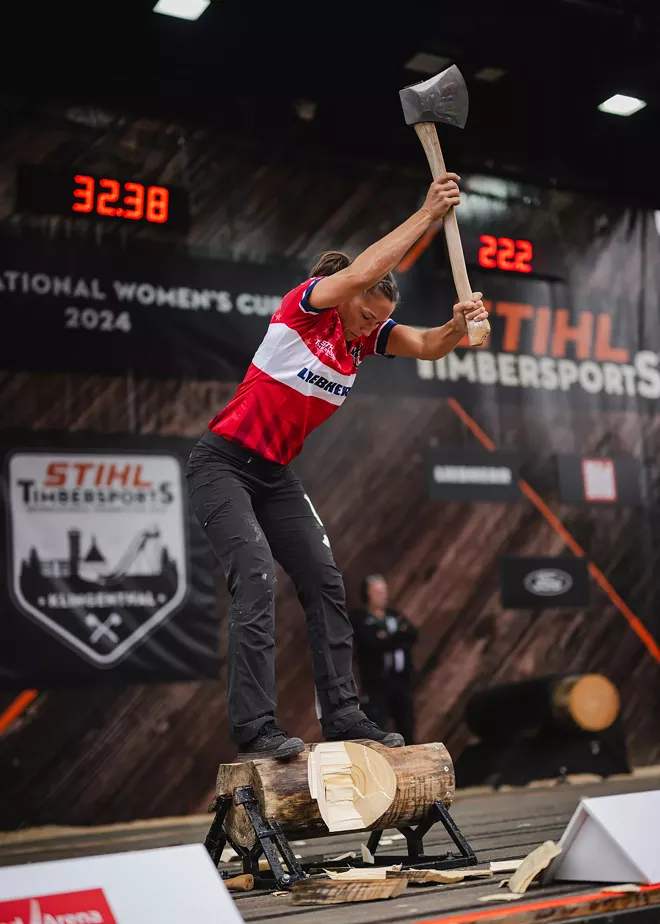
Logging sports have been around just about as long as logging has.
"Everything you do in life at one point turns into competition," LaVoie says. "I mean, even printing off copies, you're probably like, 'I can do this faster than my coworker,' right? So these are old logging events, like actually chopping down or sawing down trees, that just turned into competition and became a little more cleaned up and put onto a bigger stage."
In addition to chopping wood, classic logging sports typically include pole climbing and log rolling. But most STIHL-sponsored competitions, which are the most prestigious of logging competitions, only include four events for women: stock saw, standing block chop, single buck and underhand chop.
For stock saw, athletes use the same off-the-shelf chainsaw to cut two rounds, called cookies, off the end of a 40-centimeter diameter tree trunk. One cookie has to be cut downward and one has to be cut upward, but both have to be within a 10-centimeter section.
The standing block chop is probably what you think of when you think of lumberjacks. A vertical wood block has to be felled by powerful strokes from both sides.
The single buck uses a long, handheld cross-cut saw — LaVoie's is 5 feet, 10 inches, which is longer than she is tall — to saw the end off a horizontal wood block.
And the underhand chop, LaVoie's favorite and current world record, requires the athlete to stand on top of a fixed horizontal wood block and chop it in half from both sides, until the log splits and their foot hits the ground.
Crossfit helps train body coordination and power to some extent. But to practice cutting trees, you've got to, well, cut trees.
"Everything you do in life at one point turns into competition."
"My building owner let me build a stage out there," LaVoie says, pointing through a window to a black platform behind her Crossfit gym where she trains for timbersport events.
But to train, LaVoie first has to have trees. To get trees, LaVoie has to fell them on a designated plot of Idaho forest, supervised by a professional logger. She cuts down aspens and cottonwoods, hauls them two hours back to Spokane, and does a whole lot of loading and unloading at different storage locations.
"It's very hard, kind of ugly work — I mean, not to me, I love it," she says. "You run out into the woods and you find a tree, cut it down, and you chop it or you saw it into logs, load it in a truck, bring it home, you unload it, you peel it, you wrap it, load it back into a truck, move it somewhere else. And then, when it's time to train, you unload it again, and then you set it in a stand and get it prepared, and then you chop it in half. So all of that is very, very manual labor. If you're not interested in that, you're not gonna make it what you see on stage, the 23 to 40 seconds of it that looks easy. When you're good at your job, you make it look easy."
But the biggest struggle for LaVoie, between Crossfit and training and hauling and competing, is holding back.
"I know that I have a long road ahead of me," she says. "If I didn't compete, I probably wouldn't [focus on recovery]. I'd just turn and burn because I love it so much. But I know that I have to keep healthy, so I hold myself back sometimes. But I've always been moving. I've always been active. And when I don't get that, I'm not a happy person. This is keeping me sane and happy. It feels like home to me." ♦




